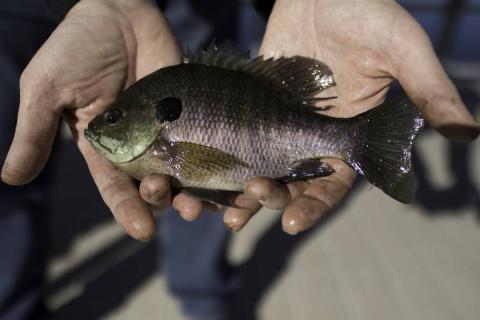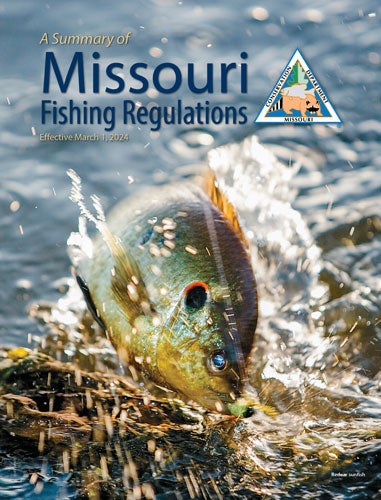Keep safety in mind
Proper fish handling and release is all about safety — your safety as well as the safety and health of the fish.
Learn the best ways to protect your hands and to keep fish safe when catching them and when they are in your possession.
Media

Title
Choose equipment that brings fish in with minimal damage
Title
Choose equipment that brings fish in with minimal damage
Body
- Use artificial lures over live bait. Fish that hit artificial baits are less likely to be hooked deeply enough to damage vital organs and have a higher survival rate.
- Squeeze hook barbs flat with pliers or file them off. Barbless hooks allow you to unhook fish without causing serious wounds.
- Always carry a hook disgorger or needle-nosed pliers. Back the hooks out, if possible.
- Clip the line as close to the hook as possible if the fish is hooked deeply in the gills or stomach. The hook will fall out after a time, with minimal damage to the fish.
- Use a landing net large enough to handle your fish safely.
Title
Reduce fish stress — angling advice
Title
Reduce fish stress — angling advice
Body
- If you use live bait, set the hook at the first sign of a bite, so the fish doesn't have time to swallow the bait.
- On rod and reel, don’t play a fish any longer than necessary.
- Check setlines frequently to improve survival of released fish, and in the summer keep setlines positioned above the thermocline (the transition zone between surface water and deep water).
Title
Handle fish carefully
Title
Handle fish carefully
Body
- Wet your hands and any other dry surface a fish may come into contact with. This will protect the fish’s slime coat, which guards it from infection and improves survival.
- Hold large fish by the lower jaw with one hand and support the heavy body with the other.
- Grasp fish with teeth across the gill covers.
- Never put your fingers in the eyes or gill sockets.
- Minimize the amount of time a fish is exposed to the air — gently release the fish as soon as possible.
Title
Maintain optimal conditions in holding tanks and live wells
Title
Maintain optimal conditions in holding tanks and live wells
Body
- Provide continuous aeration, cooling the water with ice in the summer, maintaining a 0.5 percent salt solution (1/3 cup non-iodized salt per 5 gallons water), and replacing half of the water in your live well every two hours.
- Don’t allow water to drain from a live well when motoring around the lake.
- Don’t put too many fish in your live well. You should put no more than 3/4 pounds of fish per gallon of water. Most live wells can hold about 11 gallons of water plus 8 pounds of fish.
Title
Recommendations for tournaments
Title
Recommendations for tournaments
Body
In addition to fish-handling guidelines listed above, follow these recommendations during tournaments:
- Locate the weigh in site close to the release site and the parking lot or boat-mooring area.
- Keep fish in live wells until participants leave their boats.
- Shorten weigh in lines by using only three to five organizer-provided weigh-in baskets. A series of 50-gallon plastic garbage cans may be spaced every 10 feet up to the scales so that baskets of fish can be kept in the water right up until the actual weigh-in. The water in these cans must be kept fresh or aerated.
- Provide proper water conditions in the tournament holding tank by using continuous aeration and maintaining recommended temperature and salt levels (see live well recommendations above).
- Choose a release site with relatively cool, clear, deep water.
- Assign people to coordinate fish release. After the weigh-in, fish should be classified as releasable or non-releasable. Non-releasable are dead, weak, or injured fish. It is better to keep any questionable fish as food than to waste them by returning them to the lake.
- Three to five days after the release, check the release area to remove any dead fish if necessary. The tournament should not be considered over until this has been done.
Title
Videos






















